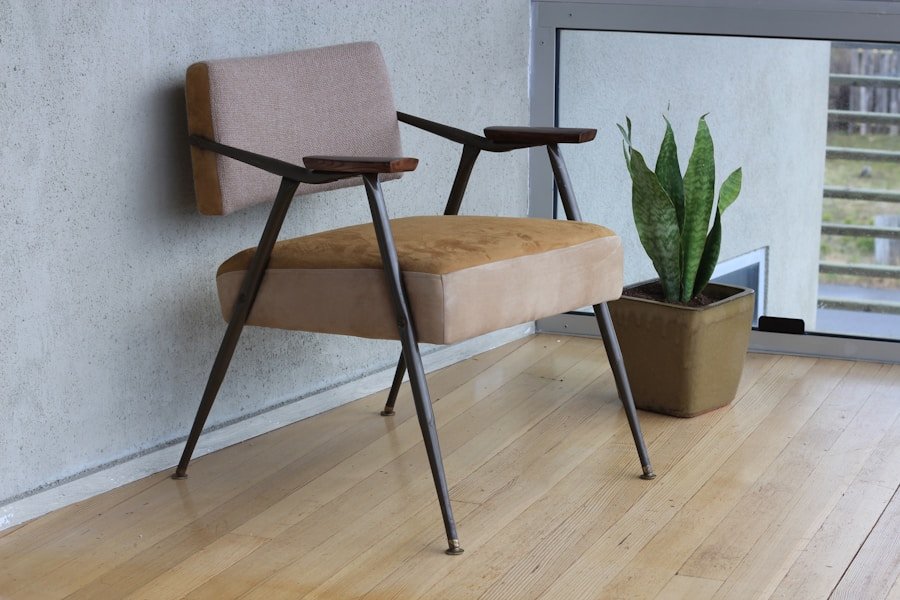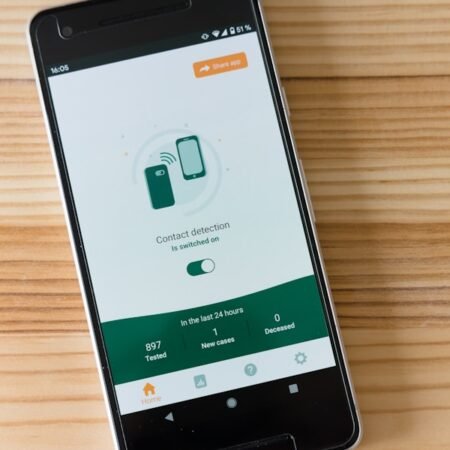When it comes to baby-proofing your home, it’s important to consider all potential risks that could harm your little one. One of the most common hazards in a household are sharp corners on furniture, such as tables, cabinets, and countertops. These corners pose a significant risk for babies who are just learning to crawl and walk, as they are prone to bumping into things as they explore their surroundings.
Without proper protection, these sharp corners can lead to painful bumps and bruises for your child. This is why corner guards are essential for baby-proofing your home. By installing corner guards on all sharp edges, you can create a safe environment for your baby to explore without the risk of injury.
In addition to protecting your baby from bumps and bruises, corner guards also provide peace of mind for parents. Knowing that your child is safe from potential hazards in your home can alleviate stress and allow you to focus on enjoying precious moments with your little one. By understanding the risks associated with sharp corners and the importance of protecting your baby, you can make informed decisions about baby-proofing your home and ensure a safe environment for your child to grow and thrive.
Key Takeaways
- Corner guards are essential for baby-proofing to prevent bumps and bruises for your little one.
- Understanding the risks of sharp corners and edges can help parents prioritize the use of corner guards in their homes.
- Choosing the right corner guards involves considering factors such as material, size, and adhesive strength.
- Proper installation of corner guards is crucial for securely baby-proofing your home and protecting your baby and furniture.
- The benefits of corner guards extend beyond just protecting your baby, as they can also save you money and stress in the long run.
Choosing the Right Corner Guards: A Guide for Parents
When it comes to choosing the right corner guards for your home, there are a few key factors to consider. First and foremost, it’s important to select corner guards that are made from high-quality materials that are durable and long-lasting. Look for corner guards that are soft and cushioned to provide maximum protection for your baby in the event of a collision.
Additionally, consider the color and design of the corner guards to ensure they blend seamlessly with your home decor. This will allow you to baby-proof your home without sacrificing style. Another important consideration when choosing corner guards is the size and shape of the corners you need to protect.
Measure the dimensions of the corners on your furniture to ensure that the corner guards you select will provide adequate coverage. Some corner guards are designed specifically for certain types of furniture, such as tables or countertops, so be sure to choose the right style for each area of your home. By taking the time to carefully select the right corner guards for your home, you can ensure that your baby is protected from potential hazards while maintaining the aesthetic appeal of your living space.
Installation Tips: How to Securely Baby-Proof Your Home with Corner Guards
Once you have chosen the right corner guards for your home, it’s important to install them securely to ensure maximum protection for your baby. Start by thoroughly cleaning the surface of the furniture where you will be applying the corner guards to remove any dirt or debris. This will help the adhesive on the corner guards to adhere properly and provide a secure fit.
Next, carefully peel off the backing from the adhesive on the corner guards and press them firmly onto the corners of your furniture. Be sure to apply even pressure to ensure that the corner guards are securely attached. In addition to using adhesive, some corner guards may also come with screws or other hardware for added security.
If this is the case, be sure to follow the manufacturer’s instructions carefully to ensure that the corner guards are installed correctly. Once the corner guards are in place, give them a gentle tug to ensure that they are securely attached and will not come loose with regular use. By following these installation tips, you can baby-proof your home with confidence, knowing that your little one is protected from potential hazards.
The Benefits of Corner Guards: Protecting Your Baby and Your Furniture
| Types of Corner Guards | Features | Price Range |
|---|---|---|
| Silicone Corner Guards | Soft and flexible, easy to install | 10 – 20 |
| Foam Corner Guards | Lightweight, non-toxic, affordable | 5 – 15 |
| Plastic Corner Guards | Durable, easy to clean | 8 – 25 |
In addition to protecting your baby from bumps and bruises, corner guards also provide benefits for your furniture. Over time, sharp corners on furniture can become worn down and damaged from regular use. By installing corner guards, you can protect your furniture from dents, scratches, and other signs of wear and tear.
This can help to preserve the quality and appearance of your furniture, extending its lifespan and saving you money in the long run. Furthermore, corner guards can also prevent damage to walls and other surfaces in your home. When babies are learning to walk, they often use furniture for support as they navigate their way around a room.
This can lead to scuff marks and dents on walls and other surfaces as furniture is pushed and bumped into place. By installing corner guards on furniture, you can minimize the risk of damage to your walls and keep your home looking its best. With these benefits in mind, it’s clear that corner guards offer a valuable solution for protecting both your baby and your home furnishings.
Common Misconceptions: Debunking Myths About Corner Guards
Despite their many benefits, there are some common misconceptions about corner guards that may deter parents from using them in their homes. One common myth is that corner guards are unsightly and will detract from the aesthetic appeal of a room. However, with a wide variety of colors and designs available, it’s easy to find corner guards that blend seamlessly with your home decor.
This allows you to protect your baby without sacrificing style. Another misconception is that corner guards are difficult to install and may damage furniture. In reality, most corner guards are designed to be easily installed with adhesive or other non-invasive methods that will not harm furniture surfaces.
Additionally, many corner guards are removable, making them a flexible solution for baby-proofing your home. By debunking these myths about corner guards, parents can feel confident in their decision to use this essential safety measure in their homes.
Corner Guards for Every Room: Tailoring Baby-Proofing to Your Home
When it comes to baby-proofing your home with corner guards, it’s important to consider the unique needs of each room in your living space. In areas where your baby spends a lot of time, such as the living room or playroom, it’s essential to install corner guards on all furniture with sharp edges. This will create a safe environment for your little one to play and explore without the risk of injury.
In addition to main living areas, it’s also important to consider other areas of your home where sharp corners may pose a risk to your baby. This includes bedrooms, bathrooms, and kitchens, where furniture and fixtures with sharp edges are common. By tailoring baby-proofing with corner guards to each room in your home, you can ensure that your baby is protected from potential hazards no matter where they roam.
The Long-Term Impact: How Corner Guards Can Save You Money and Stress
In addition to protecting your baby from bumps and bruises, corner guards can also have a long-term impact on your household. By preventing damage to furniture and walls, corner guards can save you money on costly repairs and replacements in the future. This can help to preserve the value of your home and maintain its aesthetic appeal over time.
Furthermore, by creating a safe environment for your baby with corner guards, you can reduce stress and anxiety about potential hazards in your home. This can allow you to focus on enjoying precious moments with your little one without worrying about their safety. By considering the long-term impact of corner guards on both your finances and peace of mind, it’s clear that this essential safety measure offers valuable benefits for parents and their babies alike.
In conclusion, corner guards are an essential tool for baby-proofing your home and creating a safe environment for your little one to explore. By understanding the risks associated with sharp corners and choosing the right corner guards for your home, you can protect your baby from bumps and bruises while preserving the quality of your furniture and walls. With proper installation and consideration for each room in your home, corner guards offer valuable benefits that can save you money and alleviate stress in the long run.
By debunking common misconceptions about corner guards and tailoring baby-proofing to fit your unique living space, you can create a safe and secure environment for your baby to grow and thrive.
FAQs
What are corner guards?
Corner guards are protective covers or cushions designed to be placed on sharp corners of furniture or fixtures to prevent injuries from bumps and bruises, especially for babies and young children.
Why are corner guards important in baby-proofing?
Corner guards are important in baby-proofing because they help to create a safer environment for babies and young children by reducing the risk of injury from sharp corners on furniture and fixtures.
What are the benefits of using corner guards?
The benefits of using corner guards include preventing bumps, bruises, and injuries caused by sharp corners, providing peace of mind for parents and caregivers, and helping to create a safer and more child-friendly living space.
Where can corner guards be used?
Corner guards can be used on a variety of furniture and fixtures, including tables, countertops, cabinets, shelves, and other sharp-edged surfaces that pose a potential risk of injury to babies and young children.
How do corner guards work?
Corner guards work by providing a cushioned barrier between sharp corners and the child, absorbing the impact of any accidental bumps or collisions and reducing the risk of injury. They are typically made of soft, padded materials such as foam or rubber.



































